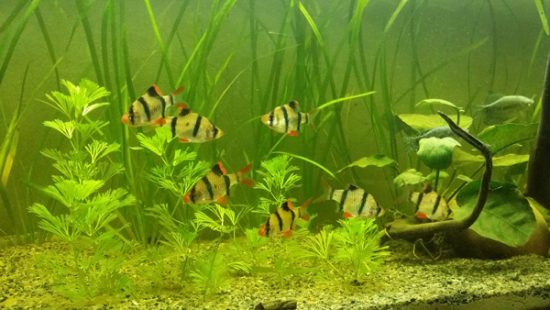Freshwater aquariums are usually the first step for anyone entering the fish-keeping hobby. It is quite rewarding setting up an aquarium and watching it thrive. Unfortunately, sometimes things don’t go our way and the fish tank experiences a rise in algae growth. This guide will talk about common reasons why algae overtake your aquarium and some remedies for it. Besides changing out carbon, this guide will help teach algae management without using chemicals.
High Nutrient Levels
One of the first things to do when trying to figure out why there algae is taking over your aquarium is to test your water parameters. Assuming this is an established aquarium, we will primarily be testing for phosphates and nitrates. I would recommend using API’s Freshwater Master Test Kit for nitrates and other parameters and API’s Phosphate Test Kit for phosphates.
High levels of nitrates and phosphates can cause algae to grow out of control and it can become dangerous for fish as well. To remedy high levels of nutrients in your water there are a few things that can be done.
First, make sure you are not over-feeding your fish. If you see food reaching the substrate, you are most likely overfeeding your fish. I normally feed my fish once a day and rarely twice a day.
Second, to remove the nutrients out of your aquarium we will be required to do water changes. If your nitrate levels and phosphate levels are very high, I would recommend doing smaller water changes over a longer period of time. This will help prevent your system from going into shock. Instead of doing a 25% water change in one day, do 10% or less every other day until your water parameters stabilize. Doing so will hopefully gradually drop your nitrate and phosphate levels.
Make sure your filter media is also renewed. It is normally recommended to change out activated carbon once a month or (if applicable) Chemi-Pure every 3 months. All this will help lower your nutrient levels to help prevent algae growth.
Cut Down on Lighting
Too much light can also be a big problem in aquariums. I would not recommend more than 8 hours of lighting per day in a freshwater aquarium. If there is an algae problem and your water parameters are not the problem, lighting might be the cause of the algae growth. When setting up your fish tank, it should be far away from windows to prevent sunlight from reaching the aquarium. Too much natural and artificial light will cause algae to flourish!
Cut your light schedule to 6 hours for a few days to see if that changes anything. The fish won’t be bothered by the change in lighting so don’t worry about that. Keep an eye on any live plants that may be growing in the aquarium. I would recommend testing water parameters before trying this.
Not Enough Cleanup Crew to Manage
Another problem freshwater aquariums have is not having enough clean-up crew to combat the naturally growing algae and eventually, it overwhelms the system.
As long as your water parameters are stable and at a healthy level you can counteract the algae that will eventually grow in your aquarium by adding snails, shrimp, and plecos. For large amounts of algae, plecos are usually the go-to due to their size and eating habits compared to a snail. Unless a freshwater predatory tank is being kept, it is recommended to have all three types of algae grazers. In a predatory setting, plecos are usually kept and will most likely not be eaten.

For smaller aquariums, a clown pleco or a handful of Ottocinclus are usually the preferred species, and in larger aquariums Bristlenose Plecos are commonly used. Bear in mind common plecos can get to be about 2 feet in length!
I normally recommend Mystery Snails or Nerite Snails. Nerite Snails will not be able to successfully reproduce in freshwater so they are the perfect choice if you are afraid of a potential snail infestation.
For heavy-duty algae grazing Amano Shrimp are a great choice due to their size but many hobbyists add smaller shrimp such as the cherry shrimp due to their wonderful coloring. Many shrimp are required to help combat algae blooms.
Bare in mind that in order to successfully keep invertebrates such as shrimp and snails, your water parameters should be quite stable. Inverts are very sensitive to fluctuations in water parameters.
Final Thoughts
High nutrient levels, overfeeding, too much lighting, and not enough algae eaters are a few very common reasons why algae can take over an aquarium. One could be the root of the problem, or a combination can be causing algae to thrive. Chemicals will only band-aid the problem, it is important to get to the source of the problem and correct it. Only use chemicals to remove algae as a last resort! Hopefully, this guide has helped point you in the right direction to removing algae. Take a look at 8 Great Ways to Help Remove Hair Algae to learn of some tips and tricks on how to get algae from thriving in your aquarium.


Pingback: 5 Wonderful Algae Eaters for Freshwater Aquariums - ATParium
Pingback: 8 Great Ways to Help Remove Hair Algae in Aquariums - ATParium
Comments are closed.